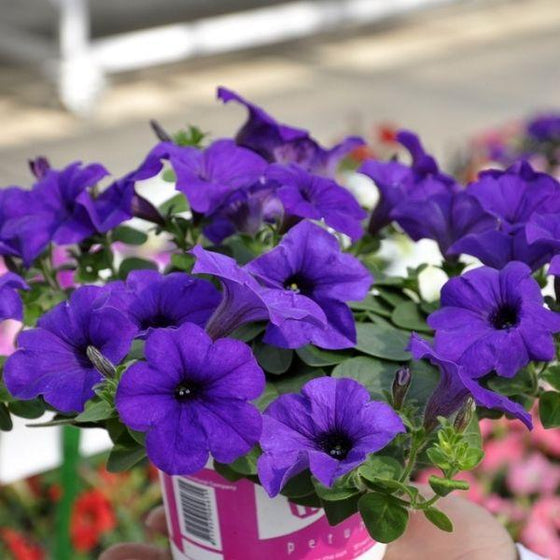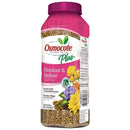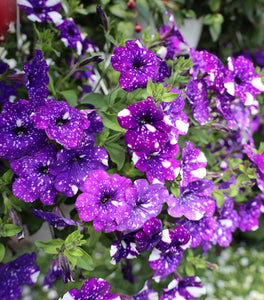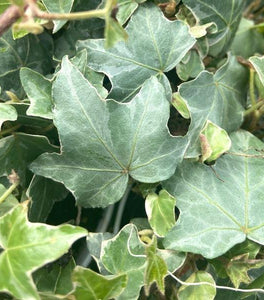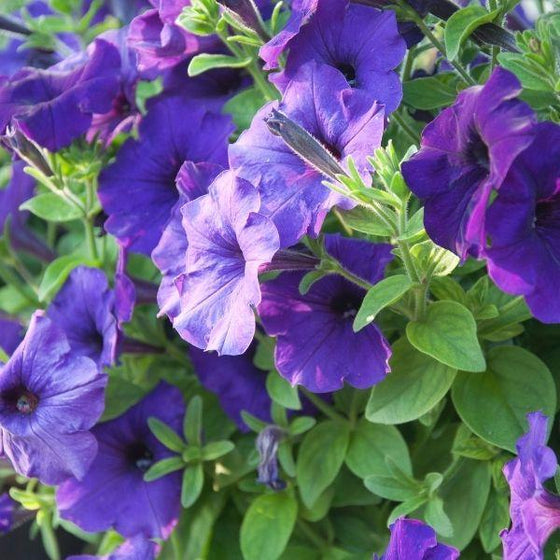
Images Depict Mature Plants
Blue Petunia Plants for Sale Online
The Blue Petunia is a spreading annual with deep blue-purple blooms. Their bright flowers attract butterflies and hummingbirds along with other pollinators. Plant your Blue Petunia en masse or in a mixed flower bed for an incredibly colorful spring garden.
In full sun and well-draining soil, these plants are extremely easy to grow; at the end of the season, your Petunia plants can grow up to 1 foot tall but spread 3 feet wide. While we treat Blue Petunias as annuals, they are hardy in zone 11 and can be kept outside all year as a perennial.
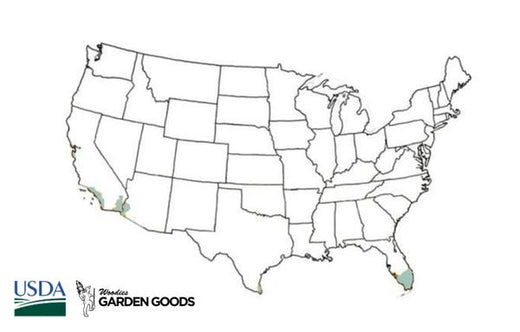
| Hardiness Zone: | 10-11 |
|---|---|
| Mature Height: | 12 to 18 Inches |
| Mature Width: | 30 to 40 Inches |
| Classification: | Annual |
| Sunlight: | Full sun to part shade |
| Habit: | Spreading, clump forming |
| Flower Color: | Blueish-purple |
| Foliage: | Glossy green |
| Soil Condition: | Well-draining, moist |
| Water Requirements: | Likes to stay slightly moist |
| Uses: | Mass planting, container plant, hanging basket |
How to Care for Blue Petunia
Before you buy a Blue Petunia, make sure to read about the care instructions that are required and recommended to keep this plant healthy and thriving!
How Do I Water Blue Petunias?
This plant requires evenly moist well-drained soil to thrive. However, they can be susceptible to root rot, so be sure that the container and/or soil is well draining to make sure the plant does not sit in 'wet feet'. Water at a medium rate for best results.
What Type Of Fertilizer Does Blue Petunia Require?
To keep your Blue Petunia in its best shape, we recommend feeding them every week while they are growing in the summer. For the best and biggest blooms, use a flower-focused fertilizer such as Espoma Flower Tone.

What is The Best Soil for My Blue Petunia?
Petunias requires rich, well-draining soil although it can tolerate a wide range of pH levels and soil types including Clay, Loamy, and Sandy.

How Much Sun Does My Blue Petunia Need?
For the best showy summer blooms, make sure that your Blue Petunia gets full sun (6 to 8 hours a day). Although it can survive in partial sun and shade, remember that the more shade your plant receives, the less it will bloom.

